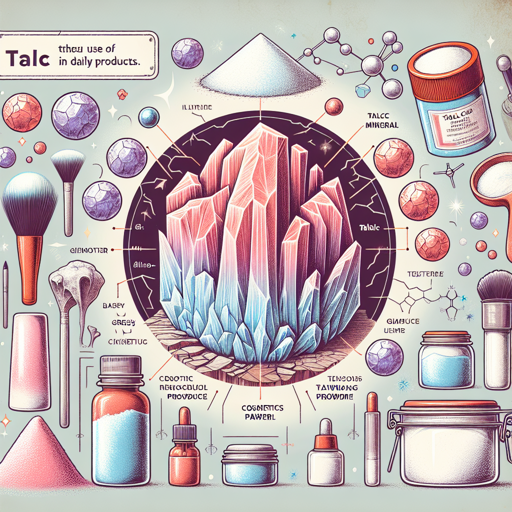Talc: The Hidden Mineral in Your Daily Products
Exploring the widespread use of talc, from cosmetics to baby powder, and its impact on our daily lives.

Introduction
The world of minerals is not only fascinating for geology enthusiasts but is also deeply intertwined with our daily lives. One such mineral that subtly impacts our routine is talc, the softest mineral on Earth. This article delves into the prevalence of talc in various everyday products, ranging from cosmetics to baby powder.
The Ubiquity of Talc
Talc, a hydrous magnesium silicate, is known for its softness, resistance to heat, and ability to absorb moisture. These properties make it a popular ingredient in numerous consumer goods.
Talc in Cosmetics
Talc is a common ingredient in cosmetic products due to its ability to absorb moisture and oil, provide a silky texture, and act as a bulking agent. You can find it in foundations, blushes, eye shadows, and even mascara.
Talc in Baby Powder
Baby powder, another product where talc is commonly used, benefits from the mineral’s moisture-absorbing properties, providing a smooth and dry surface that helps prevent diaper rash.
Other Uses of Talc
Talc’s versatility extends beyond personal care products. It’s used in food processing as an anti-caking agent, in ceramics for its heat resistance, and even in paints and coatings for its smoothness and whiteness.
“Talc is at once a simple and complex substance. It’s found in the makeup we wear, the cars we drive, the ceramics we use, and even the chalk lines on a football field. It’s hidden in plain sight.” - Anonymous
| Use Case | Why Talc? |
|---|---|
| Cosmetics | Absorbs moisture and oil, provides a silky texture |
| Baby Powder | Absorbs moisture, prevents diaper rash |
| Food Processing | Acts as an anti-caking agent |
| Ceramics | Heat resistant |
| Paints and Coatings | Provides smoothness and whiteness |
For a more comprehensive list of talc’s applications, visit the U.S. Geological Survey’s report on talc.
Conclusion
In conclusion, the presence of talc in our daily lives is more pervasive than we might realize. Its unique properties make it an essential component in a wide range of products, from cosmetics to ceramics. While the use of talc has raised some health concerns, it remains a valuable mineral in the consumer goods industry. As consumers, it’s essential to understand these silent components that make our daily routines possible, reminding us of the intricate ways in which geology intertwines with our lives.